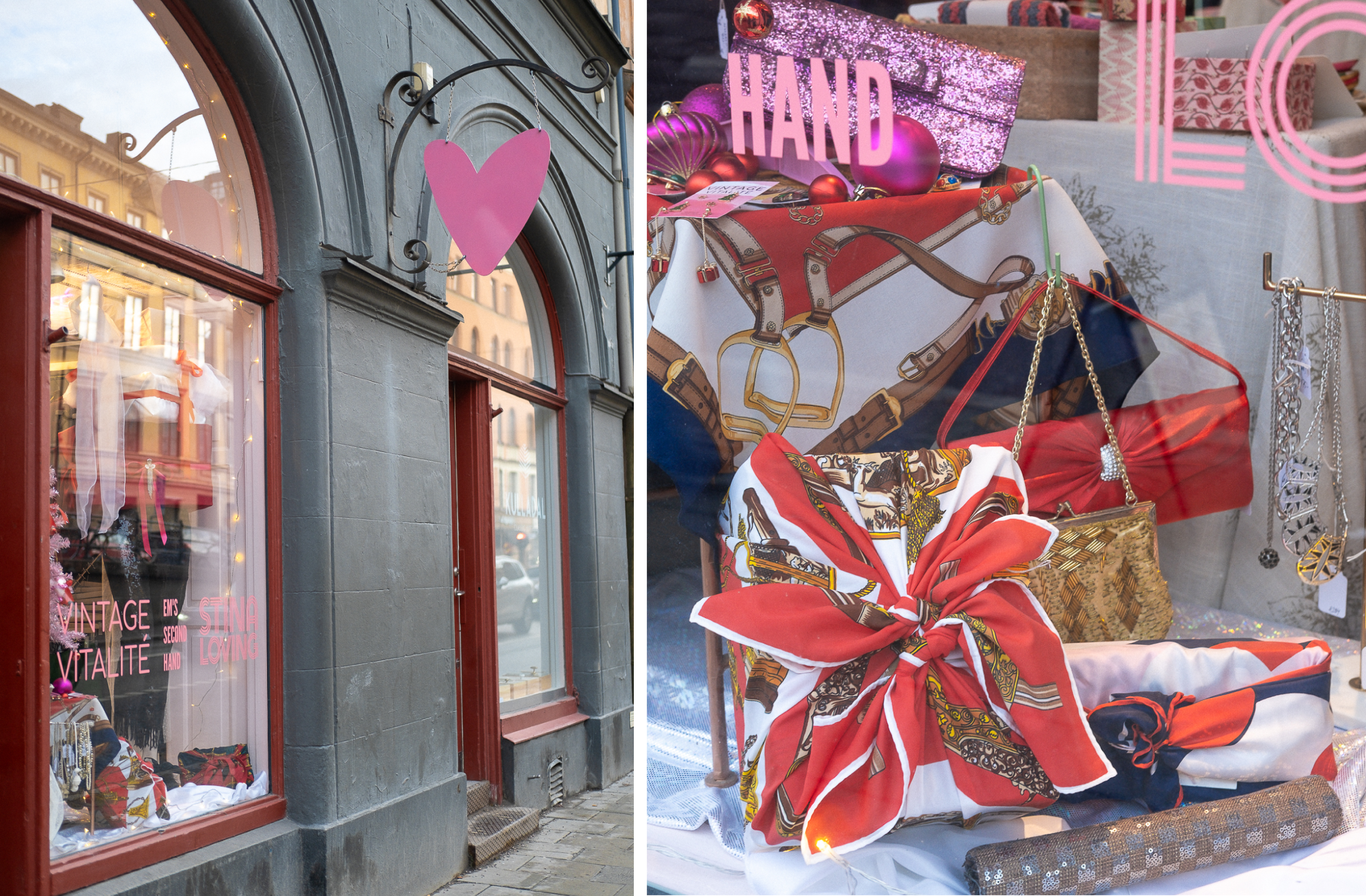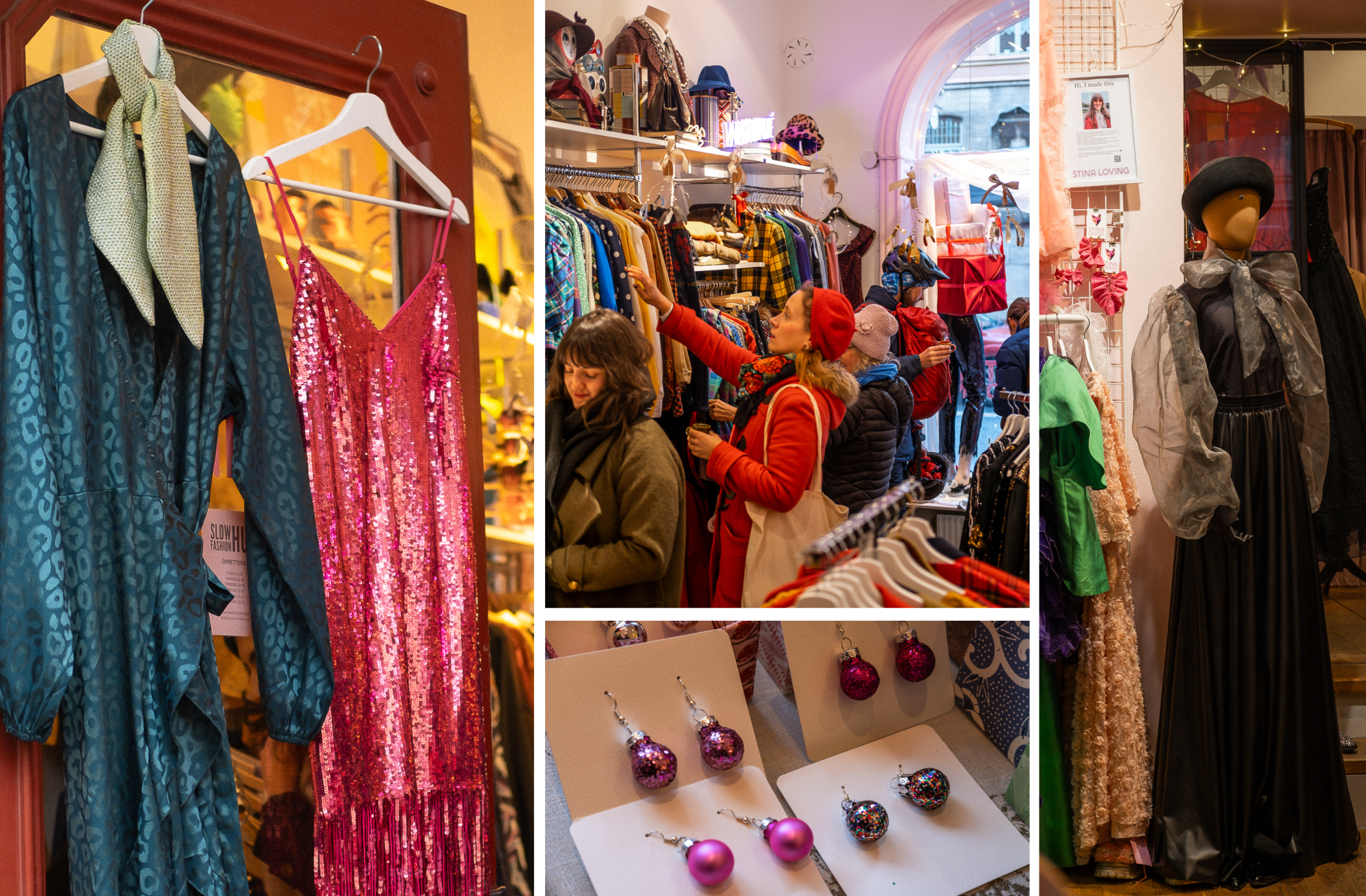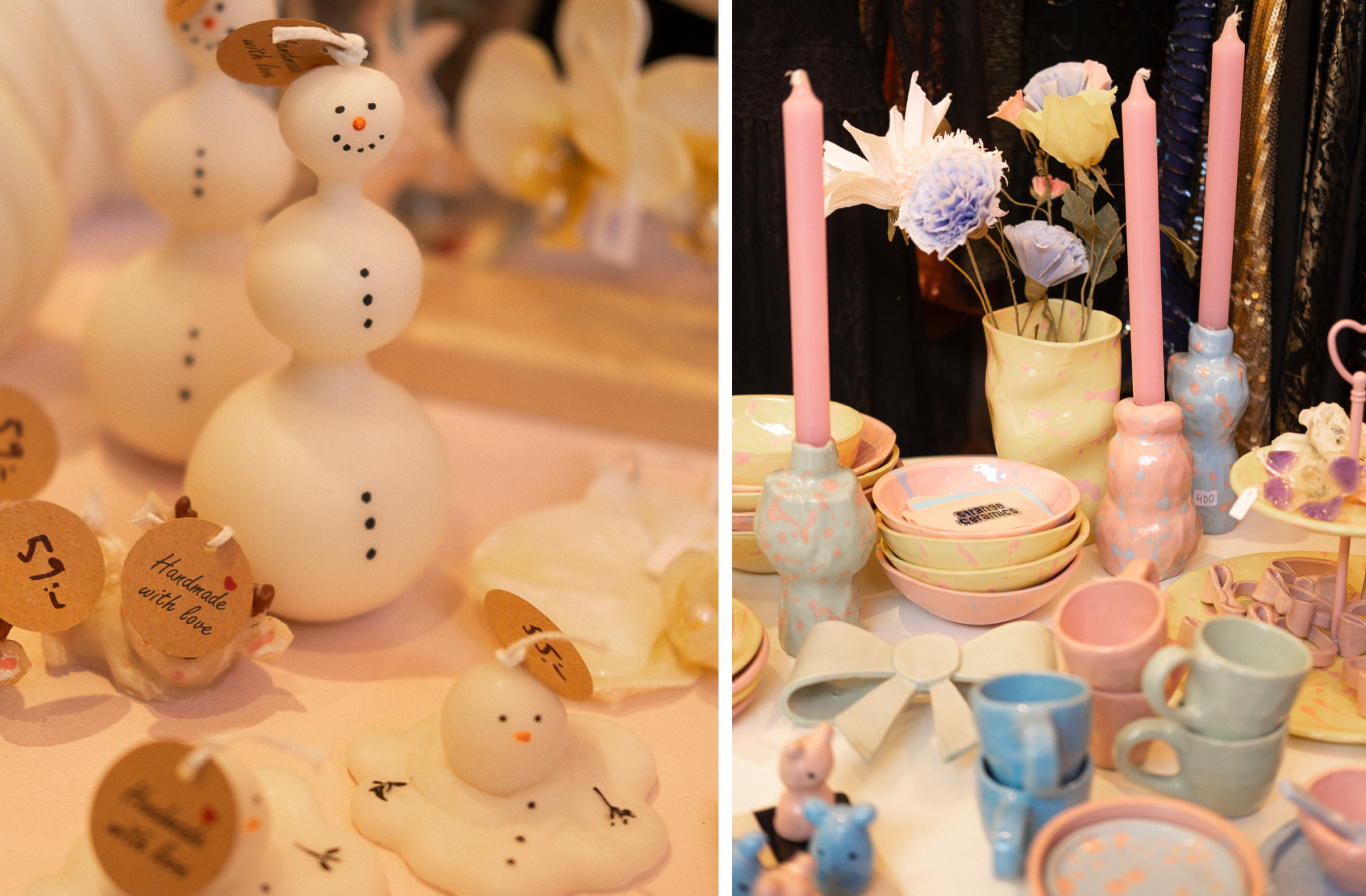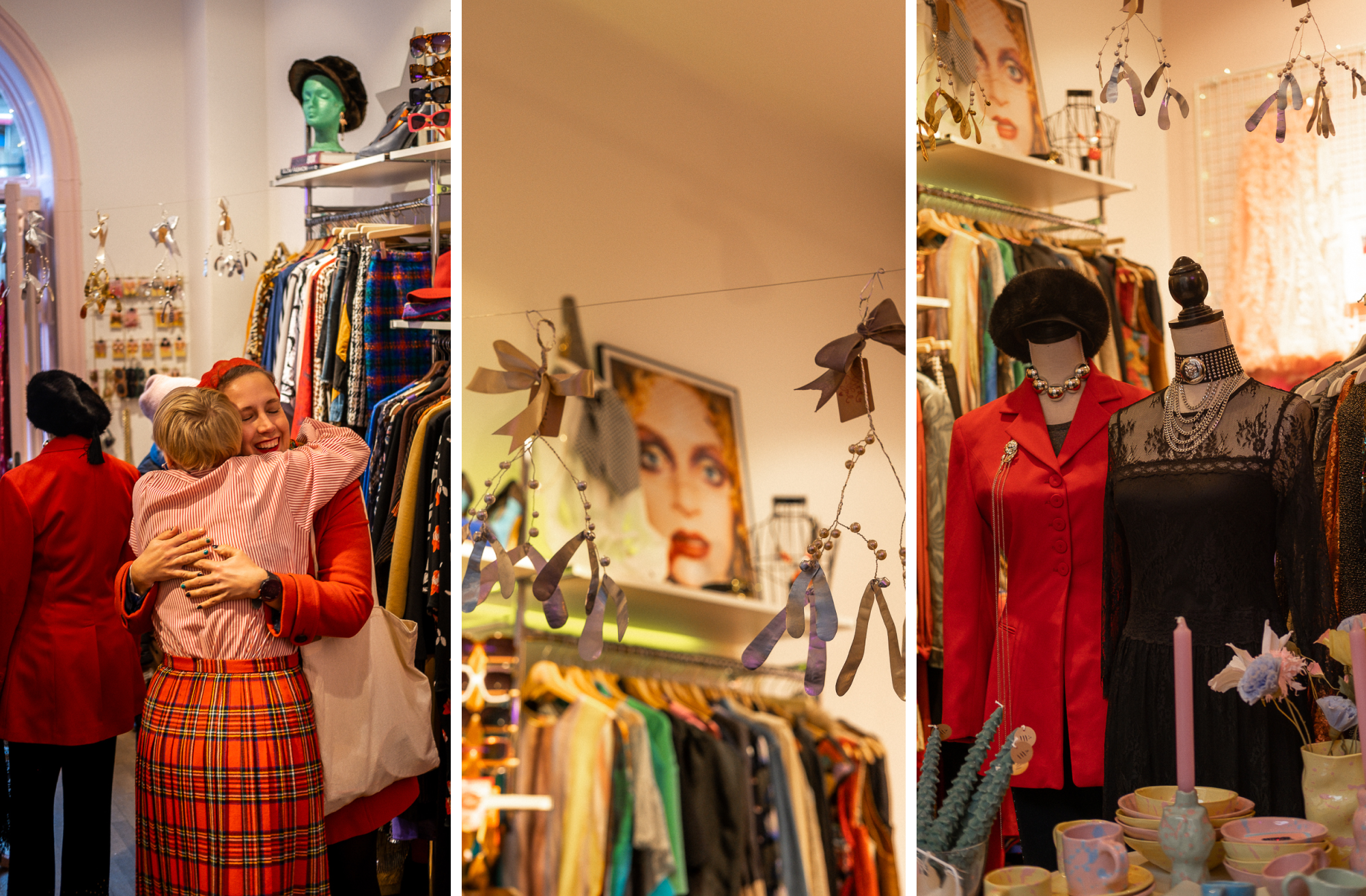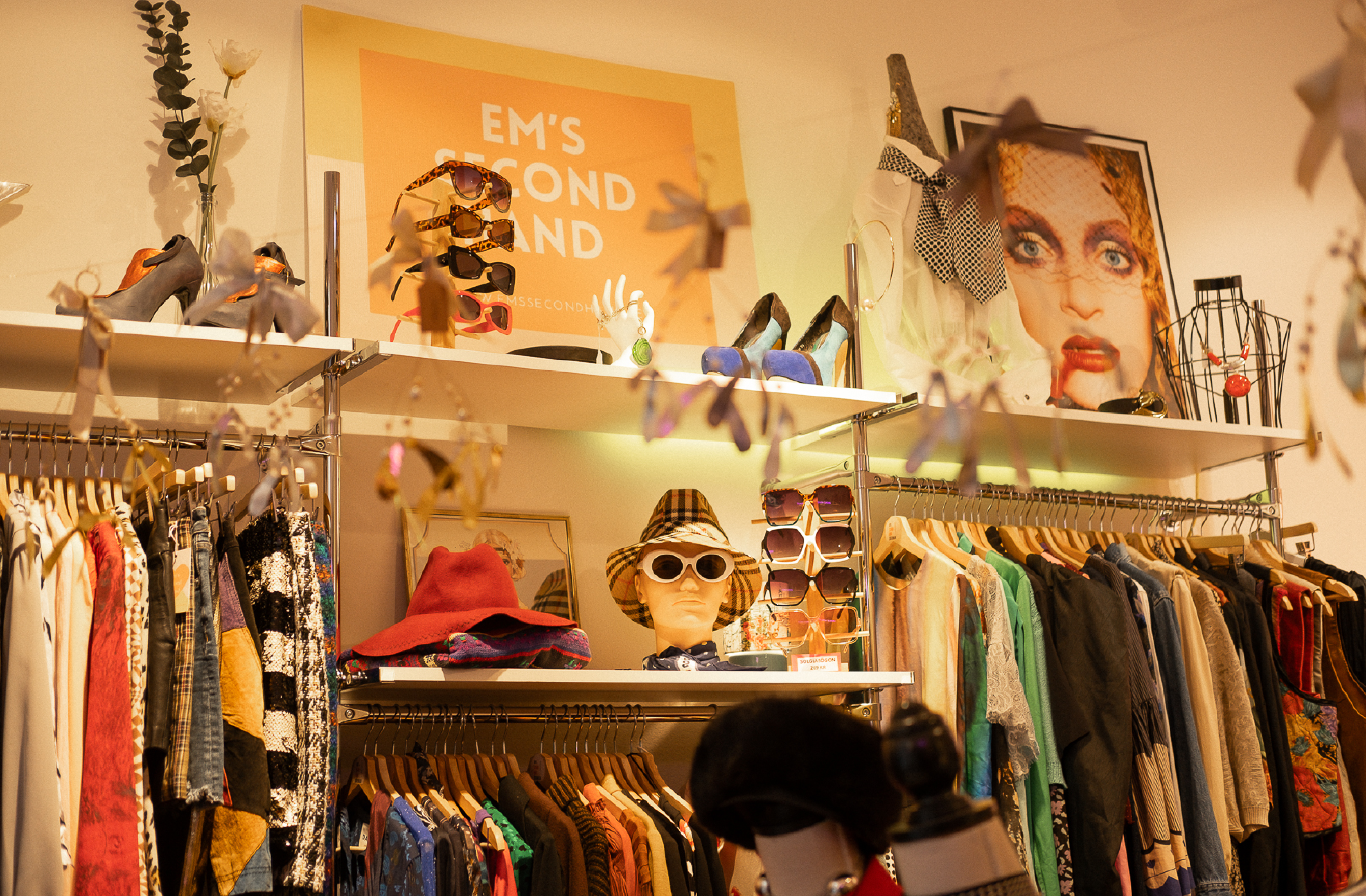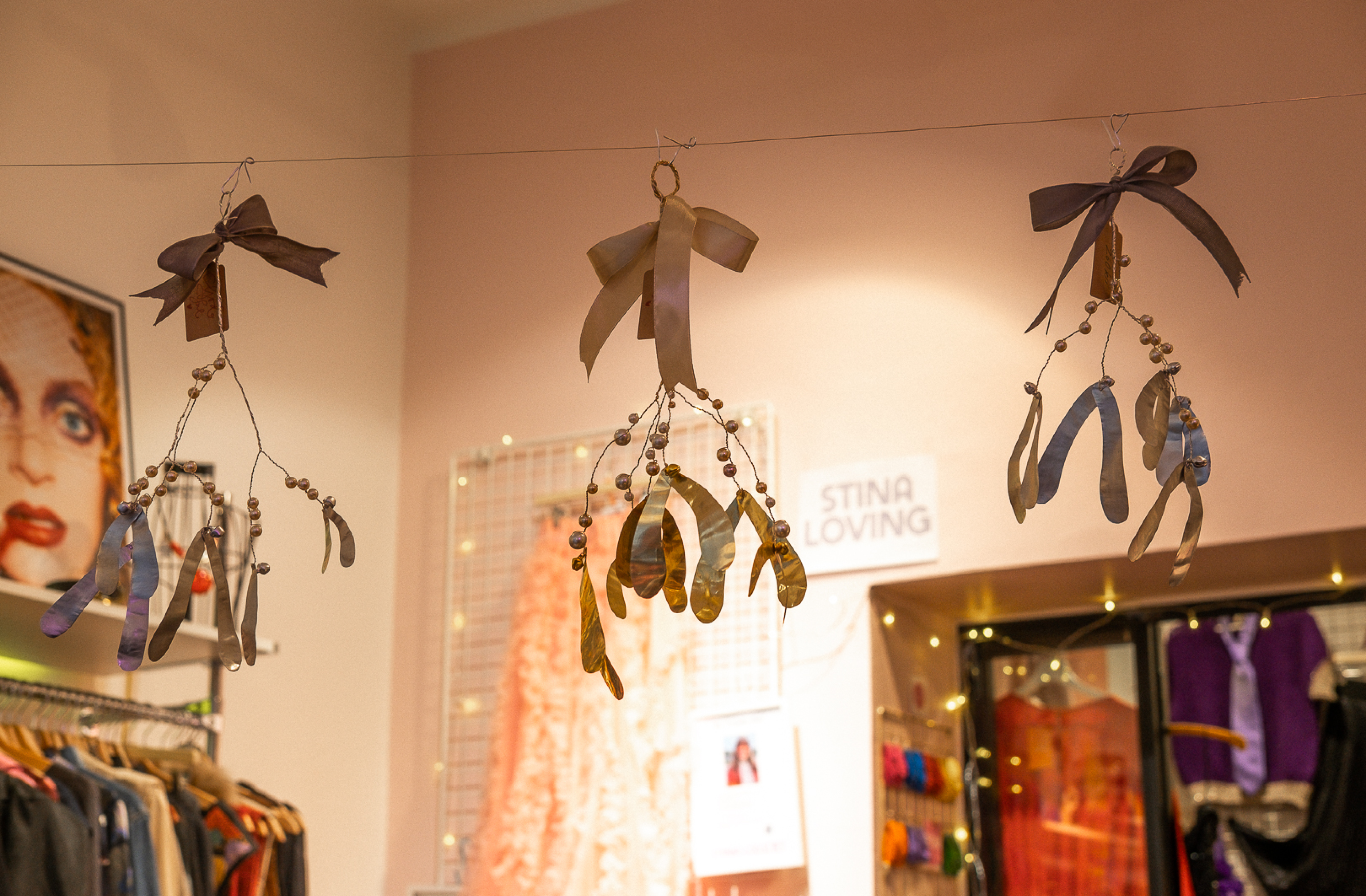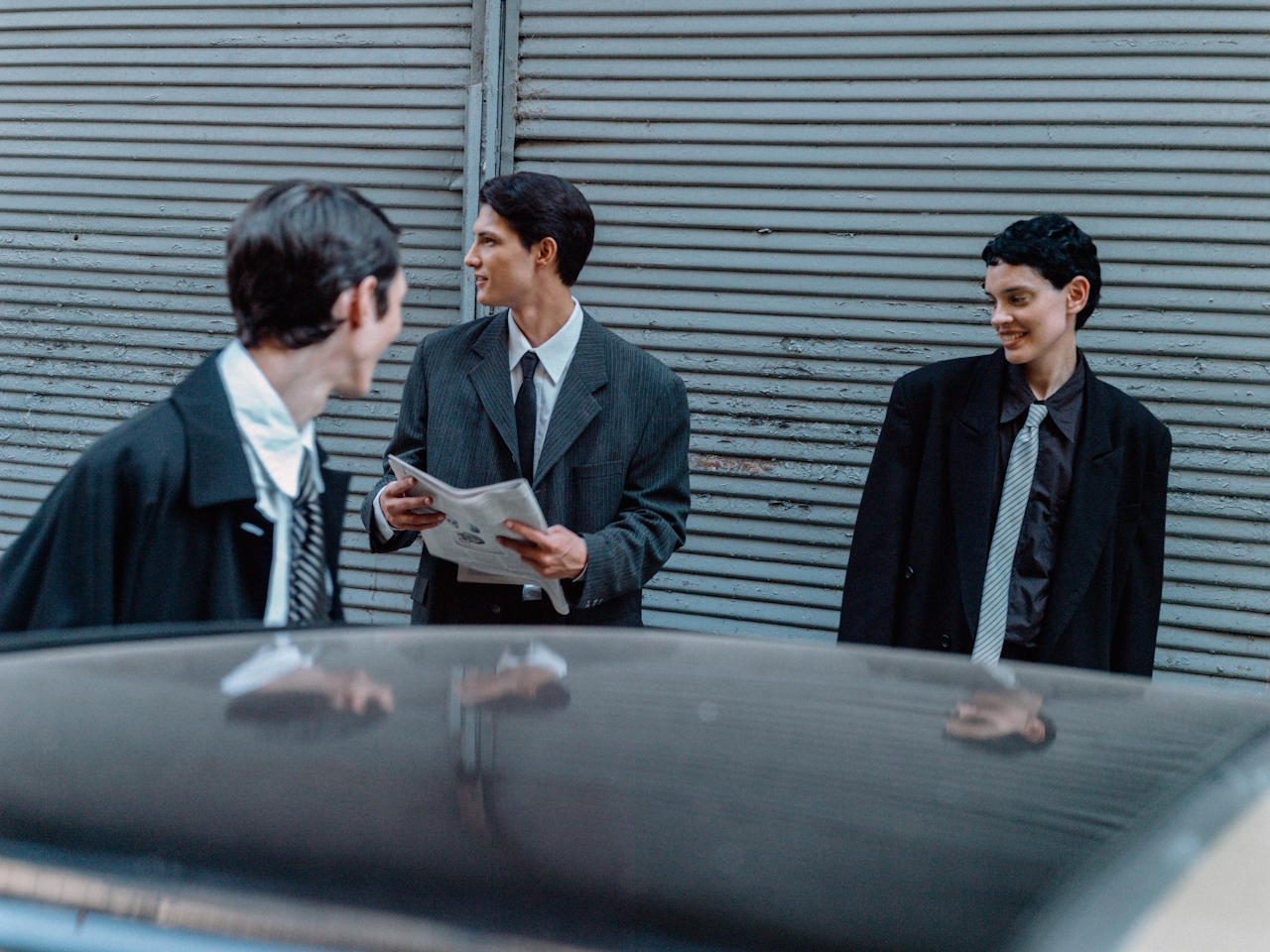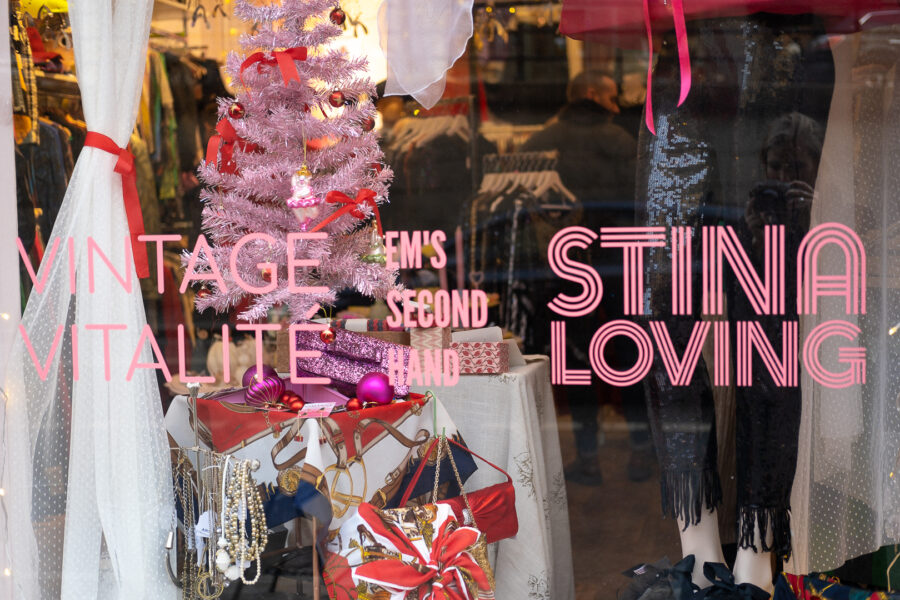
Store of the Month December: Slow Fashion Hub
At a time when the fashion industry faces major challenges around sustainability, three passionate individuals have created a unique concept in Stockholm that can inspire us all. Slow Fashion Hub was born from a vision to make secondhand and redesign more accessible for both sellers and buyers. With an innovative pop-up solution where small-scale creators and designers can rent space and test their concepts at reasonable costs, and a strong network that has already gained international media attention, they have quickly become an important player in the transition towards a more sustainable fashion industry. By focusing on collaboration instead of competition, they are showing the way towards a new type of business model where circularity and long-term thinking are at the center.
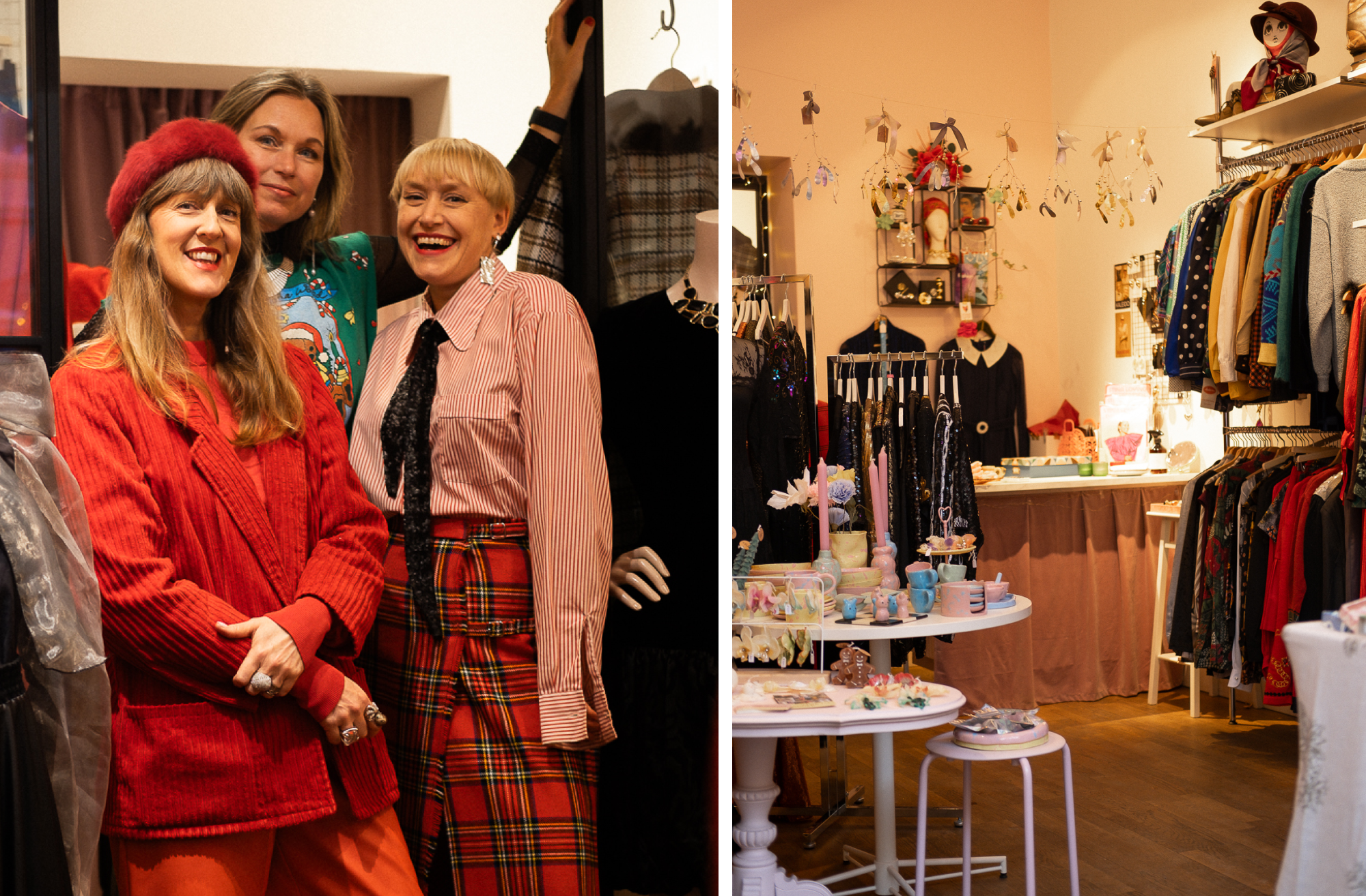 Stina (Stina Loving), Mikaela (Em’s Second Hand) and Therese (Vintage Vitalité) run Slow Fashion Hub
Stina (Stina Loving), Mikaela (Em’s Second Hand) and Therese (Vintage Vitalité) run Slow Fashion Hub
Can you tell us about the idea behind Slow Fashion Hub and how the concept developed?
All three of us have businesses that developed alongside other work, and we see that many are in the same situation, especially in the secondhand/redesign industry. It’s difficult to achieve financial profitability (that’s why the VAT on secondhand items and repairs should really be reduced – hey politicians, don’t you want to support circular businesses?) so being able to offer what we’ve been missing – a place to test selling items at an affordable price, that was the priority when we started.
Do you have any concrete tips for traditional stores and department stores that want to transition to more sustainable fashion retail?
Transparency towards customers is something we ourselves find important as consumers, at all levels. And offering circularity in your own product range. We really like Lindex’s initiative of reselling their own children’s clothes. We find it a bit strange when stores have a secondhand department with brands other than their own, as it doesn’t support the secondhand industry since they’re competing on completely different terms. It makes more sense to demonstrate your own good quality, that your clothes can be sold again and again – that’s proof of sustainability.
We’re convinced that all the big companies can do much more and be more creative in their business models and development. You can’t be fixated on everything being profitable right away; there needs to be long-term thinking in the transition. New business models and systems need to be put in place. Moreover, everyone needs to help each other and collaborate, for example as we do in the district: everyone is a colleague rather than a competitor.
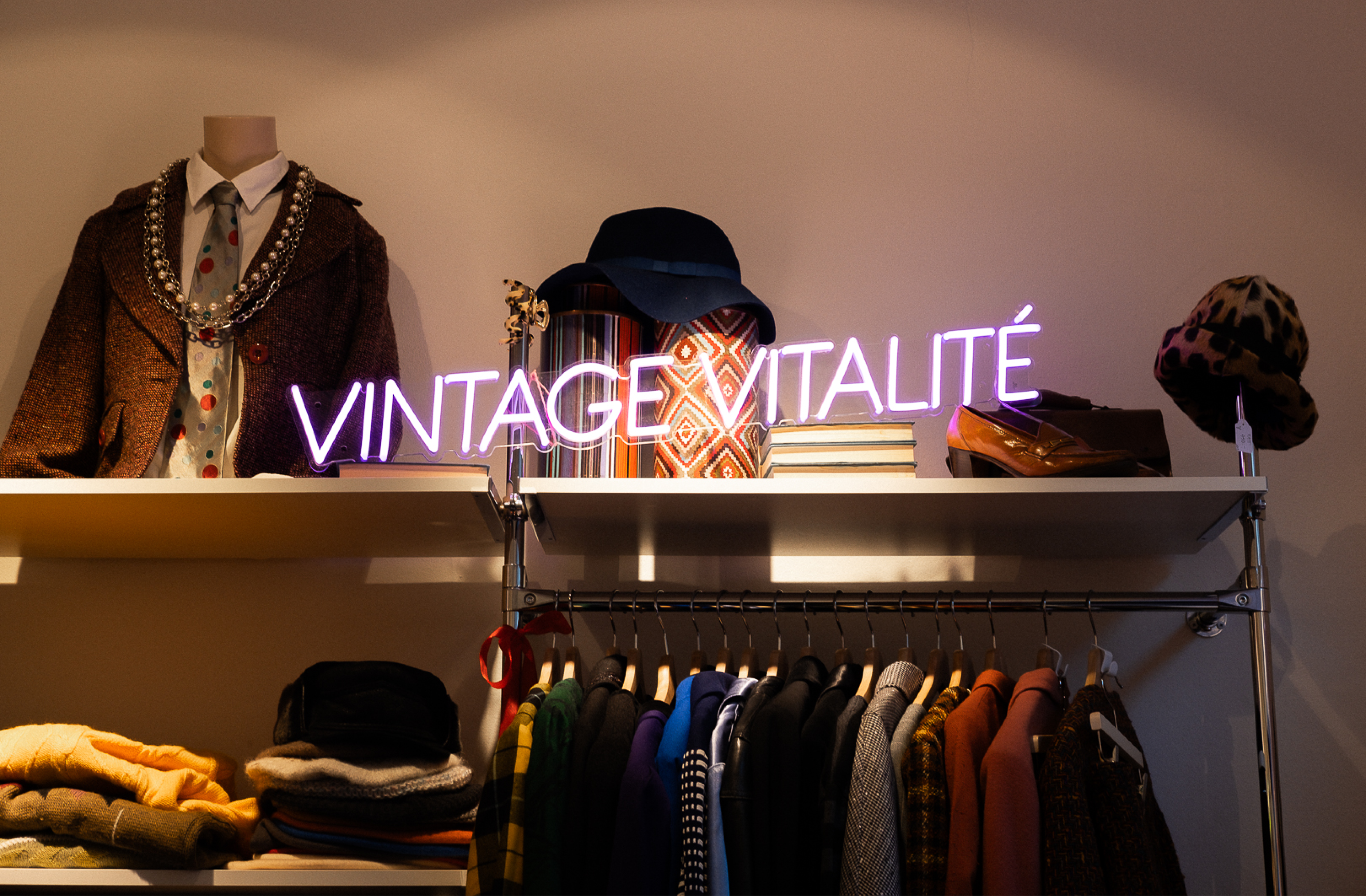
What makes your pop-up solution unique compared to other alternatives in the market?Many other pop-up spaces are very expensive and become an overwhelming cost for a small-scale creator or startup. We ourselves looked for pop-up spaces to rent in the beginning, and most are geared towards companies that are already running with good turnover, and the rent was always very expensive. We wanted to create a space in our store that we ourselves had been missing.
If it doesn’t cost in money, it costs in time. The unique thing about our pop-up space is that you pay your rent, leave your price-tagged items at the beginning of the month and collect what’s left at the end – we handle everything else. Payment, marketing, customer contacts, and so on. We also have a unique target audience and a strong network that you immediately become part of.
What types of brands and designers fit best with you, and what success stories can you share?We are careful to only accept brands that we both think fit into our store and that we believe will actually sell. For example, we have declined products we don’t think have their target audience with us or products that are too high-priced. We are also careful to tell our “pop-uppers” that they should see the month primarily as a marketing opportunity and sales secondary. That being said, most of our “pop-uppers” have done very well, and many have gained additional sales after their time with us. They have also found a new network and new opportunities through being visible in our store.
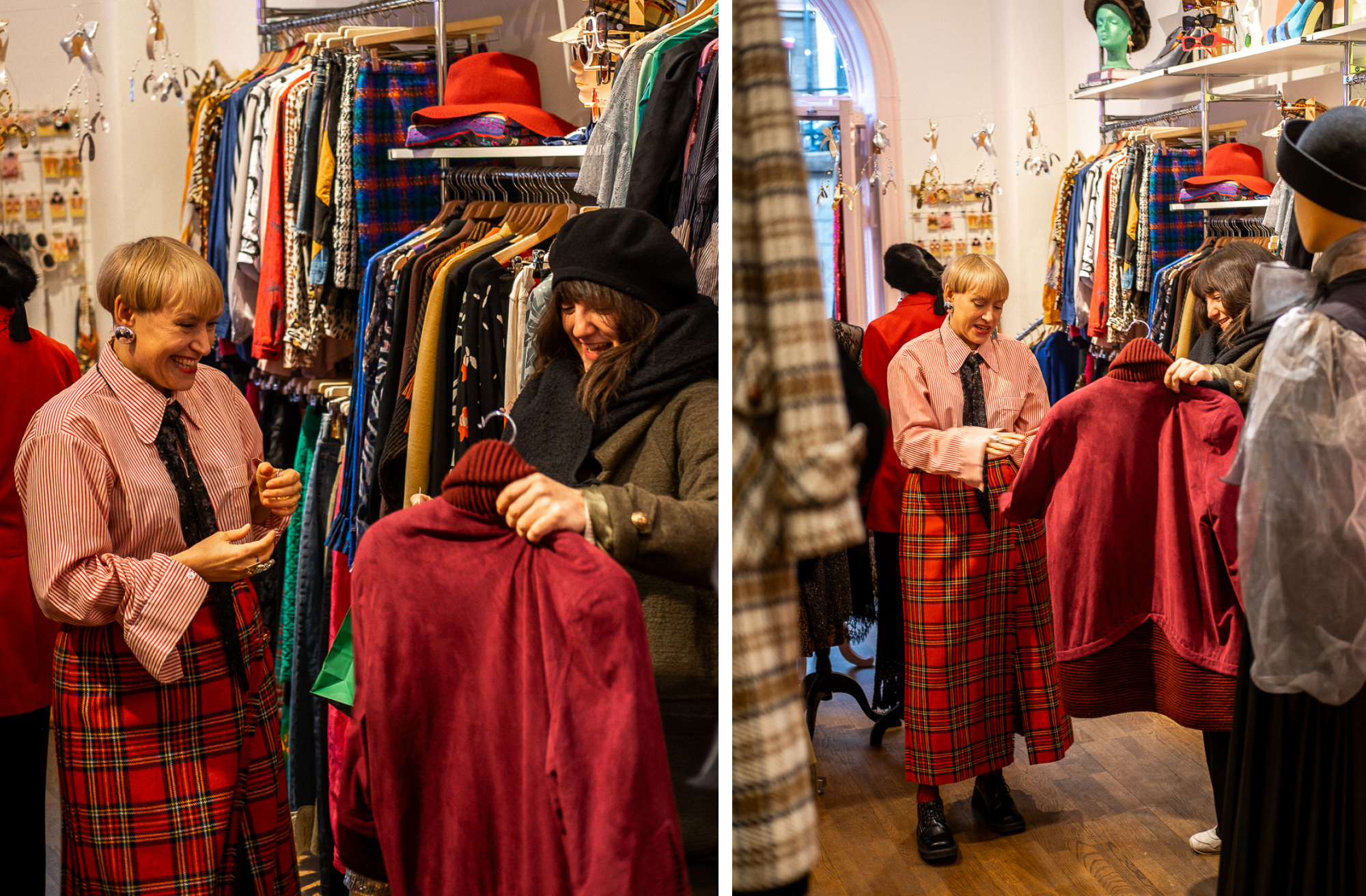
What plans do you have for Slow Fashion Hub’s development during the coming year, 2025?
2024 was our first year in the store, and we love every day when customers come in exclaiming “this place makes me so HAPPY!” 2024 was also the year when we initiated Slow Fashion District, which is a collaboration between all stores in the area and a physical map. This was noticed by Time Magazine and CBS News, among others. We organized the first Slow Fashion Gala which was a success, and yes, we think 2025 will top that, haha! A dream is a larger space with more pop-up areas, more events and happenings, a fashion show at Mariatorget with the entire Slow Fashion District is high on the wishlist. Maybe secondhand/redesign can get a place at Stockholm Fashion Week – that would be fun – and then in November, we of course want to follow up and create an even more impressive Slow Fashion Gala!
